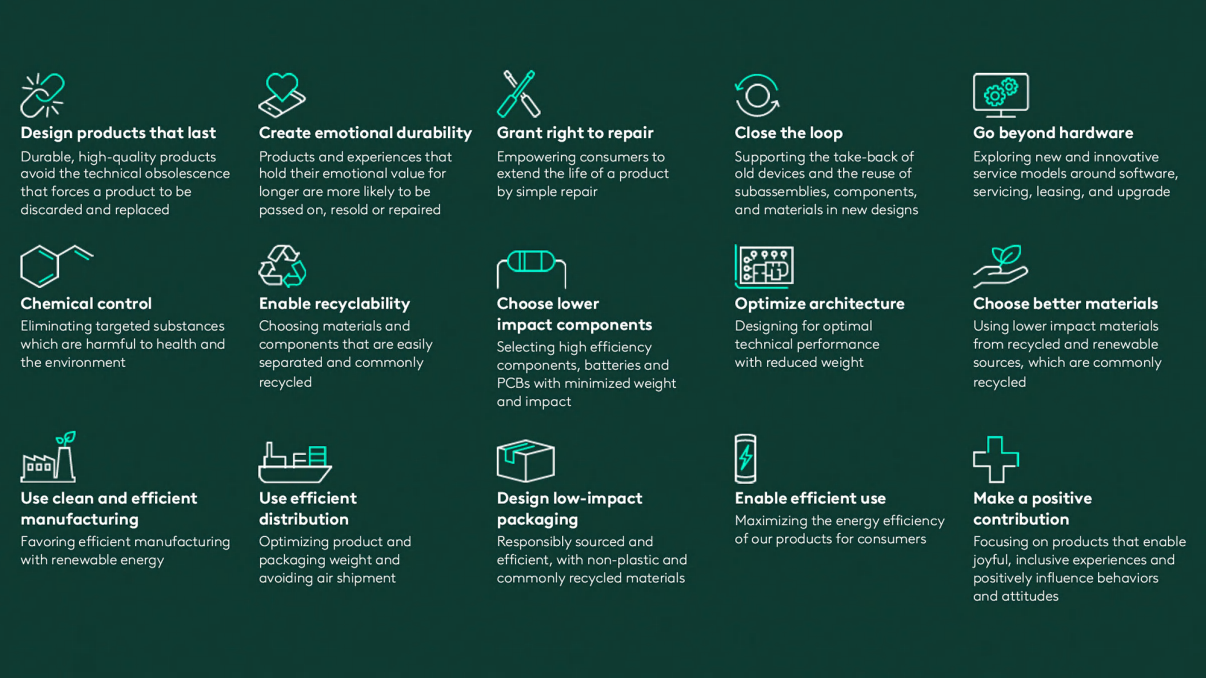How IT Leaders Can Help Their Organizations Achieve Sustainability Goals

“Organizations can realize the positive impact of green IT and software by nurturing a collaborative ecosystem of stakeholders within the value chain, aligned to green IT principles.” – Ernst & Young
In an era of climate change and public dissatisfaction with government response, private companies are seizing an opportunity to lead on issues of sustainability and the environment. In part, they’re responding to customers and shareholders who are increasingly vocal on these topics.
Customers want to know whether the companies they buy from engage in sustainable business practices. Shareholders are scrutinizing corporate ESG policies and records. As a result, many large companies like Logitech now publish detailed reports on their efforts to support Environment, Social, and Governance goals. And every area of the business is expected to contribute toward those goals, including IT.
Sustainable IT, also known as “Green IT,” is an emerging concept to describe “the initiatives IT undertakes to support the broader organization in achieving its ESG goals.”.1 Proponents of Sustainable IT recognize that IT is a contributor to an organization’s environmental impact – as well as a key partner in reducing that impact.
On the one hand, IT can help organizations automate and digitize processes that reduce energy consumption and the use of natural resources. On the other hand, these operational efficiencies address only the tip of the iceberg. For many organizations, the greatest contributor to environmental impact comes not from internal operations, but from the supply chain.2
With that in mind, IT’s greater opportunity to reduce a company’s environmental impact may come from its own procurement decisions. It has been said that “the fastest way to green your business is to purchase from one that has already greened theirs.”3 For IT leaders, this means examining the contribution of vendors and the supply chain and developing a strategy to minimize those inputs.
To Achieve Sustainable IT, Focus on Scope 3 Emissions
When organizations look at sustainability and environmental impact, they often do so through carbon accounting, or their carbon footprint. Carbon accounting is a framework of methods to measure and track how much greenhouse gas an organization emits.
This emission of greenhouse gas is categorized into three types: Scope 1 emissions, which covers direct emissions from an organization's facilities; Scope 2, which covers emissions from electricity purchased by the organization; and Scope 3, which covers other indirect emissions, including those from suppliers or vendors.
For IT, Scope 3 emissions should be a key sustainability focus. By requesting that vendors measure and transparently report on their environmental impact – including both their own carbon footprint and the contribution from their suppliers – IT leaders can purchase strategically to support the business’s sustainability goals.
An Action Plan for Achieving Sustainable IT
Make no mistake, achieving a more sustainable IT organization is not a simple matter. It requires a significant effort and a long-term commitment. Nevertheless, every journey begins with a step in the right direction.
Step 1: Understand the impact you're having as an organization right now. This means measuring the impact of your operations and the impact of your supply chain, including all the technology you purchase and provide to the business – computers, network equipment, peripherals and devices for employees, and so on. Create a baseline which you can then measure against in subsequent years to see whether purchasing decisions are reducing your carbon footprint.
Step 2: Put together a set of requirements or guidelines for purchasing decisions. Prioritize opportunities to reduce Scope 3 emissions through vendor evaluation and selection.
Step 3: Include criteria on RFPs that require vendors to disclose their ESG and sustainability practices and record. Some criteria for evaluating vendors include:
Formal commitments
Sustainability efforts spanning product lifecycles
Environment and society-focused efforts
Track record of meaningful impact
Third-party recognition

As of March 2024, Logitech is using low-carbon aluminum in 66 product lines.
Our longer-term goal is to completely eliminate traditional virgin aluminum from our portfolio.
Logitech’s Commitment to Sustainability
At Logitech, equality and the environment are core values, and we’ve made great strides to ensure they are at the center of everything we do. Sustainability is core to every design decision from the moment raw materials are sourced to the end-of-life of a product. Our ultimate purpose is to extend human potential in work and play, in a way that is good for people and the planet.
We believe products, companies, and business models should be designed for sustainability. We apply sustainable design thinking to our development processes and consider the full life-cycle impact of a product or process during the design process. Our goal is to design out adverse impacts on people and the environment and design in net positive environmental and social impact. But beyond making pledges, we’re actually walking the walk.
Logitech’s most recent annual sustainability report, titled FY24 Impact Report, marks the 16th reporting year for the company. The FY24 Impact Report intentionally reflects our expanded commitment and approach to measuring and understanding our impact and progress. Transparency is critical.
“We believe that carbon should be treated like calorie awareness, and that everyone should be aware of what they’re consuming. Taking responsibility for full life-cycle impacts of our products also means advocating for people and businesses to acknowledge carbon impact and climate change ramifications,” says Prakash Arunkundrum, COO at Logitech.
As a design-led company, we realize that the biggest opportunities to reduce environmental impact and enhance social impact arise early in the design process when key decisions about a product are made. Indeed, the sourcing and manufacture of materials, components, and products accounts for more than 50% of our total impact. So we reimagined our product development process to design for sustainability (DfS).
Design for Sustainability means that we consider sustainability as part of every design decision. It’s not an afterthought. Our in-house design and engineering teams can "design-out" impacts. We consider the full lifecycle of our products and design for low carbon impact and high recyclability.
“We have expanded our Design for Sustainability thinking across our entire existing and future portfolio to accelerate impact reductions at scale,” says Robert O’Mahony, Head of Sustainability at Logitech.
Among the achievements documented in the FY24 Impact Report are these:
Since 2019, we have reduced our carbon footprint (Scope 1 and 2) by 58% and reduced our value chain (Scope 3) emissions by 24% compared to 2021.
- 3 in 4 products made with Next Life Plastics (post-consumer recycled plastics), eliminating more than 25,000 equivalent tons of CO2 (tCO2e) in 2023. A total of 75,000 tCO2e and over 30,000 tons of virgin plastic have been avoided since the program began in 2020.
66% of Logitech products are now carbon labeled, up from 42% in 2022. Logitech is on target to carbon label all its products by the end of 2025.
- 66 product lines use low-carbon aluminum, produced with renewable energy, eliminating more than 13,000 tCO2e in 2023.
19% of products use FSC™-certified paper packaging, and the majority (73%) of new product introductions have moved to FSC™-certified packaging.
43% of products are PVC-free.
Across the globe, 94% of Logitech’s electricity footprint comes from direct and indirect renewable electricity purchases.
We have achieved gender parity in our Leadership Team with a 50:50 male-to-female ratio, and our Board of Directors posts 40% female representation.

At Logitech, product development teams are guided by our sustainable design principles.
We report on all of these goals and achievements annually with as much transparency as possible. We urge you to review our commitment as documented in our extensive FY24 Impact Report. You can also download our Logitech for Business ebook, Designing a Positive Future, Together. Lastly, we invite you to work with us to help you achieve Sustainable IT for your company or organization.
1. “A guide to sustainable IT,” Software AG.
2. “How sustainable supply chains can unlock net zero emissions,” Accenture, January 2022.
3. Attributed to Ray Anderson, former CEO of Interface, Inc.
https://www.epa.gov/sites/default/files/2021-01/documents/procurement_508.pdf
YOU MAY ALSO BE INTERESTED IN
Recommended products for you
Browse Categories: